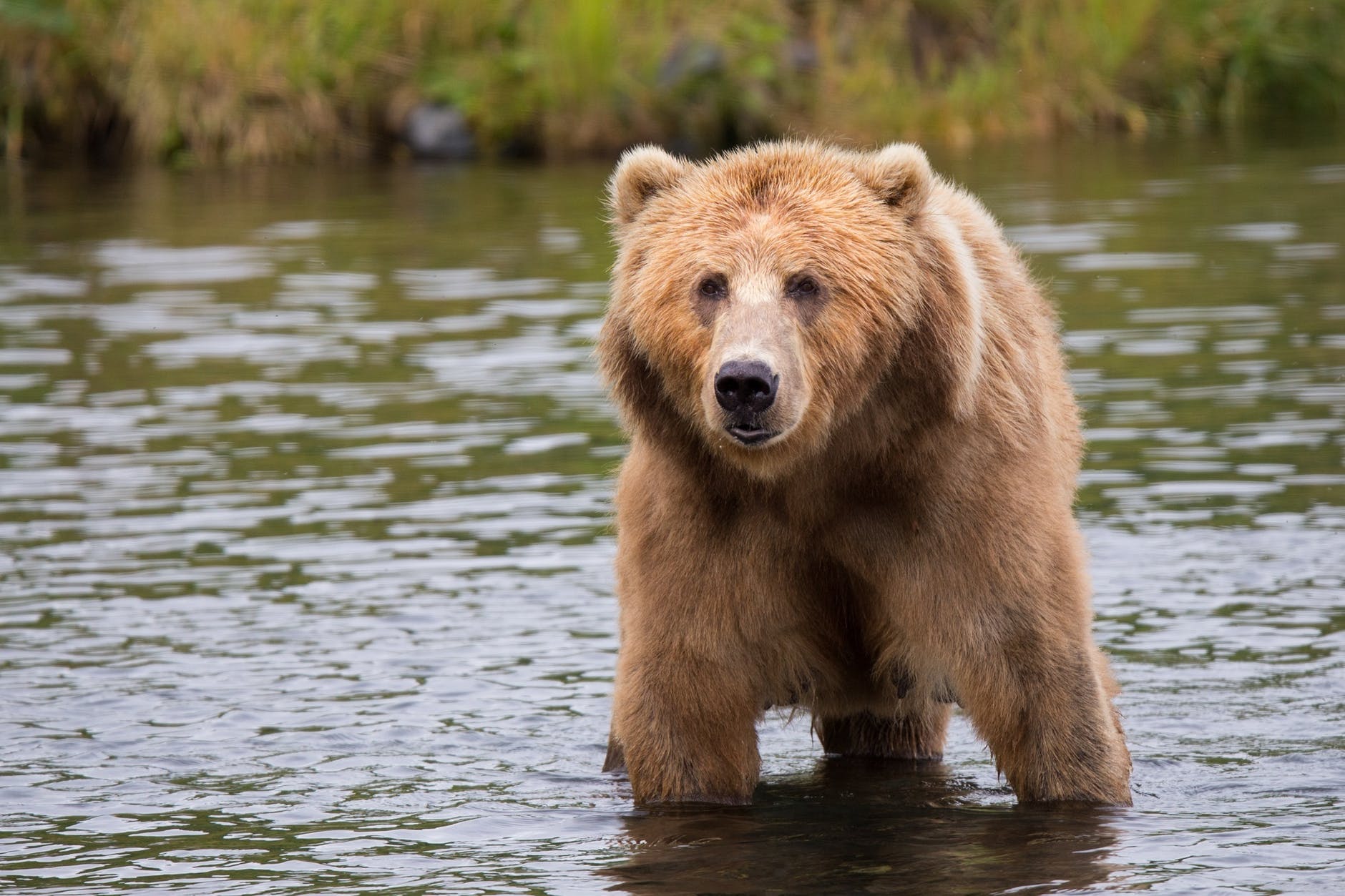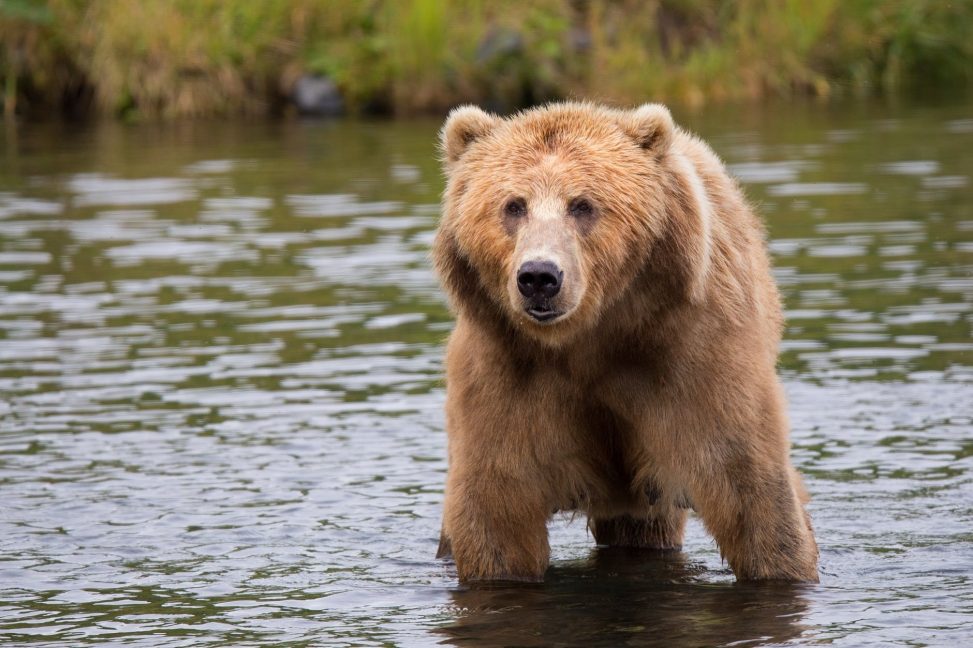
Picture this, you’re enjoying an afternoon hike with your friends. The cool air rustles the leaves on the trees, and carries the chirping of birds through the forest. Suddenly, you hear a rustling in the bushes, and a low grumble. You freeze, confronted with every hiker’s worst nightmare – a bear encounter.
As human activity reaches further into the wilderness, interactions and conflicts between bears and people are becoming more frequent. Researchers from Spain have begun to develop and deepen their understanding of human-bear conflict and the ways in which human activities influence the habitat distribution and behavioral tendencies of these large carnivores. In their study, published in January 2020, brown bears are used as a model species to showcase the interactions between large carnivore populations and the expansion of human activity. Human-bear conflict directly results in large increases in bear mortality, as well as changes in bear behavior, distribution, and genetic fitness. Furthering our understanding of the relationships between human activity and bear behavior will help to limit damages to both bear and human populations and habits.
The brown bear, Ursus arctos, is North America’s largest carnivore, with a wide habitat range throughout North America and northern Eurasia. With adult males reaching weights of 700 lbs and nearing 6 feet tall, the brown bear is a formidable beast. Despite their massive size, brown bears are in fact primarily omnivorous, eating a wide range of plants, berries, fungi, fish, small mammals, and even birds. Thanks to their garbage-disposal appetites, bears are well-known to scavenge human food from campsites and garbage dumps.
This is an example of a process called habituation, in which the bears begin to present decreased responsiveness to human presence or activities. This loss of response to human activity, combined with decreased habitat area in which to forage and increased availability of anthropogenic foods (human food), have led to multiple negative consequences for bear populations. The researchers identified one major consequence, saying “bears consuming anthropogenic foods may experience lower protein consumption than optimal during spring, which reduces body mass gain … which can translate into lower reproductive success.”
The reproductive success of bears is also influenced by human settlement itself. As settlements, defined by the study as houses, villages, or towns, have increased in density, the quality of brown bear habitats available has decreased. The regular movement and territory sizes of brown bears have also decreased, forcing bears into areas closer to human settlement and decreasing species movement. Brown bears have also been documented to exhibit changes in activity patterns, becoming more nocturnal to avoid overlap with human activities.
Human constructed civilization “outposts” such as roads which cross through brown bear habitats have also had major effects on populations of the large mammals. Bears inhabiting these ares are frequently killed by vehicle strikes and conflicts occurring on or near the road, particularly during autumn. In the study, researchers posited that this increase could be explained by the process of hyperphagia, wherein bears increase food consumption to prepare for winter hibernation. Bears have been documented tp avoid roads in avoidance of human contact in some areas, but have also shown to make use of road edges in springtime, when roadsides often bloom with many herbivorous species.
Another major area of concern identified in this study lies in hunting and fishing activities. Harvest of brown bears is legal with a permit and license in some areas and can have both positive and negative effects within the ecosystem. Adult male bears are the most prized by hunters for their large size and the bragging rights associated with successfully harvesting a large and dangerous animal.
“Removing adult makes triggers a reorganization of the social and spatial structure of a bear population: immigartion of younger and unrelated males increases infanticide of unrelated offspring, which decreased recruitment and may reduce population growth rates,” (Morales-González et al. 2020).
These effects due to hunting are amplified by the effects of recreational salmon fishing, which causes a decrease in the availability of salmon for brown bears to eat. These changes in salmon availability were found to decrease overall health of the bear populations as evidenced by increased cortisol (the stress hormone) and testosterone levels in the blood. Additionally, salmon fishing places humans in bear-dominated landscapes during a critical feeding time, therefore drastically increasing the potential for bear-human conflicts and even bear or human mortality.
This study offers an in-depth analysis of the risks associated with human-bear interaction, and the ways in which these risks are likely to increase as human activity expands further into the habitat areas of the brown bear. The researchers call for spatial limits on human activities in order to minimize impact on bear behavior, movement patterns, and foraging/resting routines, as well as minimizing incidents of human-bear conflict or violence.
References
Morales-González, A., Ruiz-Villar, H., Ordiz, A., & Penteriani, V. (2020). Large carnivores living alongside humans: Brown bears in human-modified landscapes. Global Ecology and Conservation, 22. doi: 10.1016/j.gecco.2020.e00937
https://www.nationalgeographic.com/animals/mammals/b/brown-bear/#:~:text=

Alex
"This title was very eye catching! That is so interesting that such a ..."
Alex
"This is really interesting! The fact that crops and plants are damaged is ..."
Alex
"Well done, this article is great and the information is very captivating! Ethics ..."
Alex
"I was intrigued throughout the whole article! This is such an interesting topic, ..."
Alex
"This is such an interesting article, and very relevant!! Great job at explaining ..."
Grandpa
"Honey You Did a good job I will forward to my eye doctor "
murphymv
"This article is fascinating because it delves into the details of the research ..."
murphymv
"I agree, adding the photo helped solidify the main finding. "
murphymv
"This is a fascinating finding. I hope this innovative approach to improving transplants ..."
Sherzilla
"This is a great article! I would really love to hear how exactly ..."
Sherzilla
"It's disappointment that these treatments were not very effective but hopefully other researchers ..."
Sherzilla
"I agree with your idea that we need to shift our focus to ..."
Sherzilla
"It's amazing to see how such an everyday household product such as ..."
Lauren Kageler
"I will be interested to see what the data looks like from the ..."
Lauren Kageler
"A very interesting article that emphasizes one of the many benefits that the ..."
maricha
"Great post! I had known about the plight of Little Browns, but I ..."
Sherzilla
"I assumed cancer patients were more at risk to the virus but I ..."
Sherzilla
"Great article! It sheds light on a topic that everyone is curious about. ..."
maricha
"This article is full of really important and relevant information! I really liked ..."
maricha
"Definitely a very newsworthy article! Nice job explaining the structure of the virus ..."
maricha
"It's interesting to think that humans aren't only species dealing with the global ..."
murphymv
"This is very interesting and well explained. I am not too familiar with ..."
Lauren Kageler
"Great article! This post is sure to be a useful resource for any ..."
Lauren Kageler
"Definitely seems like an odd pairing at first, but any step forward in ..."
murphymv
"What an interesting article! As you say, height and dementia seem unrelated at ..."
murphymv
"Great article! I learned several new methods of wildlife tracking. This seems like ..."
murphymv
"Very interesting topic! You explained cascade testing and its importance very well. I ..."
Alex
"This article is really interesting! What got me hooked right away was the ..."
Sabrina
"I found this article super interesting! It’s crazy how everyday products can cause ..."
Erin Heeschen
"I love the layout of this article; it's very eyecatching! The advancements of prosthetics ..."
murphymv
"Awesome article! I like the personality in the writing. Flash Graphene not only ..."
murphymv
"Very interesting work! I don't know a whole lot about genetics, but this ..."
Cami Meckley
"I think the idea of using virtual reality technology to better help prepare ..."
Erin Heeschen
"I wonder if there's a connection between tourist season and wildfires in the ..."
Ralph berezan
"Not bad Good work "
Michelle
"This sounds like it would be a great tool for medical students! ..."